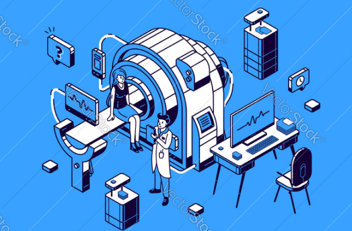What You Need to Know About Biotech DAOs, DeSci, and Life Science Web3 Concepts
Elliot Miller
Just like grunge music, vampire movies, or 3D TVs, we’ve all come to recognize the rise and fall pattern of major trends that take hold in our world. Yet even after the cynical remarks of how something in our culture has come and gone, there is usually a lasting long-tail effect of the trend you can trace for the decades that follow.
To some, blockchain technology such as bitcoin has felt like one of these trends. Yet if we remember the rise and fall of internet companies in the early 2000s, we remember that the Goliaths of our day such as Amazon are those who properly predicted the lingering effect of technology trends. For that reason, with our biotech audience in mind, I want to dive into some blockchain-related technology that will last in the space. The concepts I’ll describe have the signals of long-tail success and should not be underestimated.
Before we go deep, let’s recap some Web3 fundamentals:
Immutable:
Adjective. Unable to be changed.
Blockchain:
According to Wikipedia, “A blockchain is a type of distributed ledger technology (DLT) that consists of growing list of records, called blocks, that are securely linked together using cryptography.”
What’s important to understand about it for biotech applications is that blockchain enables an immutable system, even if in an open-source environment, that validates data, data-based assets, who has access or ownership of assets, and related activity.
Web3:
“Web3 (also known as Web 3.0 ) is an idea for a new iteration of the World Wide Web which incorporates concepts such as decentralization, blockchain technologies, and token-based economics.” - Wikipedia
Keep in mind that in Web 2.0, a corporation owns an internet utility (eg. Facebook) that users employ, and 3rd parties (eg. advertisers) pay to leverage the user data in some way. Web3 utilities can provide ownership and commercial incentive to its users. This is enabled because the data involved is immutable; we can validate exactly which user’s data has been harnessed for some commercial advantage. Hypothetically in a Web3 model, a user of a decentralized social media platform could get paid a dividend whenever an advertiser pays to use their data (with consent from the user).
DeSci:
“Decentralized Science (DeSci) is a movement that aims to build public infrastructure for funding, creating, reviewing, crediting, storing, and disseminating scientific knowledge fairly and equitably using the Web3 stack.” – Ethereum.org
Smart contracts:
“Smart contracts are computerized blockchain protocols that execute terms of a contract. Smart contracts represent computer codes ensuring that when both parties meet the terms of the contract they will execute automatically, allowing for trustless, peer-to-peer transactions.” – Wikipedia
Self-governance protocol:
A protocol bound by smart contracts that sets the rules for how a system is governed. For the context of this blog post, we’ll refer to self-governance protocols when they are governing something that can be validated by a blockchain or computer system (eg. Who gets paid a dividend or who owns X% of a system).
What are DAOs?
DAOs, or decentralized autonomous organizations, are organizations comprised of users (humans or computers) with a shared goal, acting by the rules set and maintained with a self-governance protocol. Because the self-governance rules, inputs, and outputs of the organization are immutable, the organization doesn’t need a centralized structure (such as a CEO or a de facto leader). The organization can exist autonomously in a decentralized structure, hence “DAO.”
We could get deep into DAOs and how they issue tokens to user-owners and so forth. Instead, this blog post is serving as a high-level overview so we can jump into biotech use cases. You can learn more about DAOs here.
How do DAOs work?
As an example, let’s look at a Smart Forest DAO. Developers start a DAO for a forest; they set up the technological infrastructure and provide some money for the “Forest DAO” to get started. People with a commercial interest in using the forest (such as logging companies) can pay money to the forest to use its resources (trees). With the money, the forest can purchase more land and hire help to plant more trees. The Forest DAO has a self-governance protocol which includes an algorithm that understands the rates at which it can purchase land and hire help, therefore setting the price for which it sells its resources. In theory, the forest is autonomous, self-sustaining, and self-governing while providing a utility to the outside world.
What does a DAO look like in a biotech context?
Something that’s attractive about a DAO is that it’s a new way to connect those with a shared mission and align their incentives. It also has potential to reduce competition, improve collaboration, and achieve a greater or faster outcome than might have otherwise taken place as it relates to investing in the development of IP.
In the biotech world, if independent actors have a forced trust through immutable self-governance protocols, they might share research data with each other instead of hoarding and not releasing data. This self-governance protocol could set an ownership structure of the IP based on how much work each contributor provided. Each contributor would get paid back on the commercial success of the development accordingly. In other words, researchers working to cure the same condition, or to profit from a scientific breakthrough, might do so faster together through a DAO than if they were working in two separate corporate silos.
Let’s back up a second before we jump into some examples. Some of this sounds great in theory, but there are nuanced counterpoints and details that need discussing. Also, some of the theory of biotech DAOs has yet to be executed in practice. It’s early days. This blog post is not intended to be a point vs counterpoint argument in favor of biotech DAOs. Almost every major breakthrough that takes place in the biotech space is done when biotech companies partner together, or when they create breakthroughs on their own (which in contrast to a DAO is simply doing it in a Centralized Organization). But there is a potential for disruption and a long-tail effect if someone figures it out, and there are a number of groups making headway. The people who are having success with the biotech DAO usually have a centralized organization (aka a business) that launches DAOs. And many of these DAOs are solely used for fundraising. Let’s look at some examples.
Examples of biotech DAOs and DeSci projects
1. BioVeras
BioVeras is an early-stage venture which is leveraging blockchain technology to rethink how the data within a clinical trial can be stored, transferred, validated, accessed and secured. By putting the data infrastructure of a clinical trial on a blockchain (they use ethereum), data can be more secure and more easily de-layered than any previous format of data storage technology.
2. Molecule.to
Molecule states they are “a decentralized biotech protocol, building a web3 marketplace for research-related IP.” We can break this down into a few things they are doing. 1) Creating a marketplace of biotech missions known as BioDAOs for people to become user-owners by contributing research and/or funds. 2) Tokenizing the output of these missions into what they call IP-NFTs. 3) Developing a community for those who want to further the field of decentralized biotech and discover ways for it to be more successful.
3. Vibe BioVibe Bio is “a community of patients, scientists, and partners committed to identifying, funding and developing promising treatments to rare diseases and empowering patient communities with unprecedented ownership over the process.” The company was founded by Alok Tayi, PhD. He tells the story on the Not Boring podcast of how he founded the company after he had a baby born with a rare disease and experience difficulty finding treatment options. He realized how few options there are for patients living with one of over 15,000 rare diseases.
Vibe launched Vibe Bio DAO to bring together patients, scientists and investors. The community collects funds then proposes how to use the funds and performs drug development work together. Once treatments from their efforts are commercialized or licensed by pharma companies, the returned capital goes back into the DAO.
4. VitaDAO
VitaDAO is “collectively funding and advancing longevity research in an open and democratic manner.” Longevity research projects can get funding through the DAO; meanwhile, investors and contributors earn tokens called $VITA tokens that grant holders rights to participate in decision-making. To date, they’ve funded over three million to longevity research projects.
5. ResearchHub
ResearchHub (RH) belongs more to a close cousin of the DeSci movement, the “open science” movement, than to DeSci itself. It was co-founded by Brian Armstrong, the CEO of CoinBase (which is the 2nd largest online cryptocurrency exchange in the world), so if you’re interested in Web3-biotech applications, you should keep an eye on this project.
RH aims to disrupt the traditional peer-reviewed journal system which most scientists contribute to (or are beholden to, depending on your perspective) to formally establish major research milestones and further their careers. RH claims “the scientific record is too important to be hidden behind paywalls and in ivory towers.” Instead, scientists can publish, upvote, and comment on projects within the open RH environment, much like a HackerNews for science.
6. Ants-Review
We’ll end with Ants-Review to highlight that the important infrastructure being built in the DeSci world is not always organizations themselves. Ants-Review is:
“A privacy-oriented protocol of smart contracts . . . that allows authors to issue a bounty for open anonymous peer-reviews on Ethereum. If requirements are met, peer-reviews will be accepted and paid by the approver proportionally to their assessed quality. To promote ethical behavior and inclusiveness the system implements a gamified mechanism that allows the whole community to evaluate the peer-reviews and vote for the best ones.”
Similar to RH, this protocol decentralizes the systems around peer-reviewed science and publishing to be completely decentralized. One can infer the protocol was built with an objective to democratize and de-politicize the field of science.
What’s next?
As you can see, DeSci topics are complicated. This makes the field difficult to predict. Today, most DeSci projects address fundraising, community building, and publishing. One of the compelling factors of these projects is that contributors can become owners of assets without needing traditional institutions (such as institutional investors or employers). This concept is known as a user-owner model.
Something that could exist in theory is user-owner models for clinical trials in which the subjects (patients) who provide their time and health to the body of research being conducted can own a piece of the research outcome. Imagine a world whereby volunteering to support the research of a new drug you can get paid dividends in the future based on the sales of the drug.
Similarly, “patient dividends” could be provided to individuals who share their health data with organizations. This concept could spur another blog post, but in short, imagine getting paid for 1) your responses to a health-experience survey to be shared from Company A to Company B, or 2) to consent to unlocking parts of your Electronic Medical Records (EMR) and getting a dividend whenever a 3rd party processes this data for commercial purposes.
It's still early days, and many of these theories work in contrast to the user vs data-owner business models that exist in the industry today. We will all need to stay tuned to see where the world of DeSci and decentralized healthcare goes next.

.png?width=352&name=Blog%20Headers%20(25).png)

